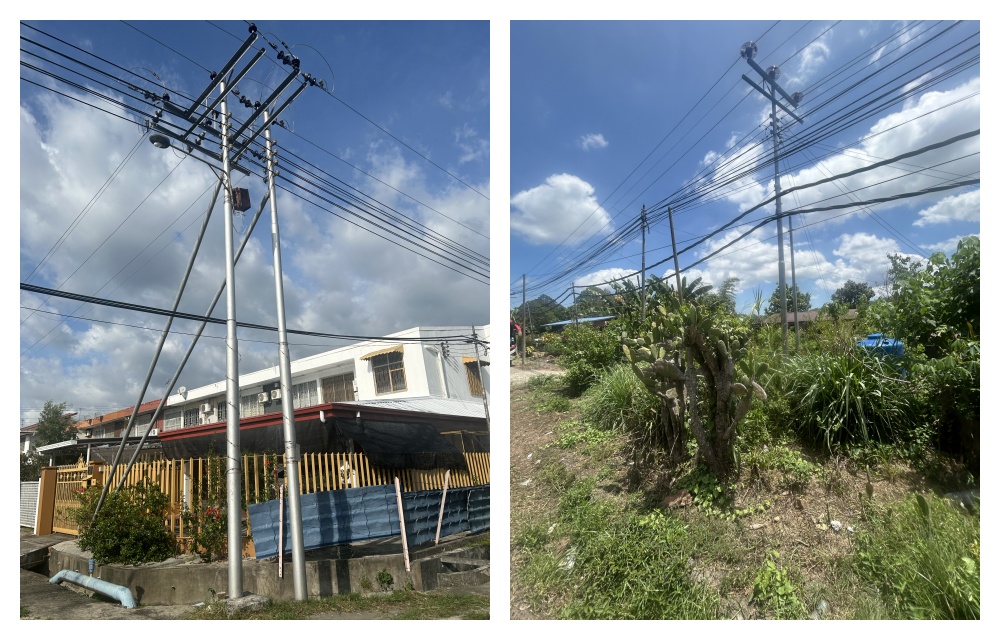Chinese Technology Revolutionizes Rural Power Grids in the Philippines: 11M Swaged Poles Illuminate Remote Islands
2025-04-22
The Philippines, an archipelago of over 7,000 islands, has approximately 30% of its rural population residing on remote islands. Historically, the electrification rate in these areas has been below 60%. Traditional power grid construction methods have proven insufficient for addressing the unique challenges posed by island environments, necessitating the development of advanced tower technologies with enhanced adaptability.
I.Technological Innovation: Four Key Features of Swaged Poles
To meet the specific requirements of the Philippines, Chinese enterprises have developed customized 11-meter Q345B steel swaged poles tailored for island conditions. These poles represent significant technological advancements through structural optimization:
Sectional Reduction Design: The pole features a three-section variable diameter structure (bottom diameter 280mm tapering to top diameter 180mm), reducing its weight to 420 kilograms—72% lighter than concrete poles. This lightweight design enables transportation via small fishing boats.
Modular Assembly: Divided into three sections connected by flange bolts, the pole can be installed within 8 hours by four workers using a simple pulley system, significantly enhancing construction efficiency.
Typhoon Resistance Reinforcement: Hot-dip galvanization and a diamond-shaped hollowed-out structure reduce the wind load during a 17-level typhoon to 35% of that experienced by traditional poles, ensuring robust performance under extreme weather conditions.
Photovoltaic Integration Interface: A standardized bracket at the top facilitates the installation of 200W photovoltaic panels and energy storage devices, enabling dual power supply guarantees through “microgrid + backbone grid” integration.
According to the technical assessment report from the Philippine Department of Energy, the flexural strength of this pole reaches 18kN•m, surpassing the local standard requirement of 12kN•m. Additionally, the cost per foundation is controlled at $1,200, representing a 55% reduction compared to imported concrete poles.
II.Practical Implementation: Transformative Electrification Projects Across the Philippines
Case 1: Masbat Island Fishing Village Electrification Project
Construction Breakthrough: In intertidal zones, the project utilized a “float transportation + manual pole erection” approach, eliminating the need for heavy machinery and completing 2.3 kilometers of line laying within 15 days.
Livelihood Improvement: Fisherman Rodrigo’s ice maker was activated for the first time, reducing daily fish spoilage from 50 kilograms to zero, enabling direct supply to Manila supermarkets.

Case 2: Sanmolishi Mountain Microgrid Project
Photovoltaic Expansion: Photovoltaic panels integrated atop the reducing poles generate an average of 2.4kWh of electricity per day per pole, sufficient to meet the basic electricity needs of three households.
Disaster Prevention Application: During Typhoon “Parrot” in 2024, poles equipped with photovoltaic energy storage maintained 92% power supply continuity, supporting emergency communication base stations.
As of September 2024, the Philippines has deployed 3,800 reducing poles across 12 provinces, increasing rural electrification access to 81%. The World Bank has recognized this initiative as a “Best Practice for Infrastructure in Island Developing States.”
III. Industrial Chain Synergy: China’s Manufacturing Empowers Southeast Asian Electrification
Localized Production: A joint factory established by China Baosteel and the Philippine PSPC Company achieves over 60% localization of pole body materials.
Intelligent Monitoring: Huawei provides IoT sensors mounted on poles to monitor tilt and corrosion rates in real-time, reducing operation and maintenance costs by 40%.
Technical Training: Guangxi Power Grid has trained 200 pole installation technicians for the Philippine side and established Southeast Asia’s first technical certification center for reduced-diameter poles.
Alfredo Vera, CEO of the Philippine National Grid, stated, “This lightweight pole has transformed the game. We aim to deploy 100,000 units within five years to electrify every island.”
IV. Standardization and Market Expansion: Leading the Blue Ocean of Tropical Island Electrification
Standard Formulation: Led by the China Electricity Council, the “Design Code for Distribution Poles and Towers in Tropical Island Areas” has been adopted by the ASEAN Energy Center.
Market Expansion: Pilot projects have commenced in Indonesia and the Maldives, with estimated demand in Southeast Asia exceeding 2 million units.
Technology Iteration: The next-generation product will integrate small fans and seawater desalination equipment, creating a “multi-functional energy tower.”

Hey, I’m Chunjian Shu
"X.Y. Tower: Reliable, innovative solutions for high-quality towers and electrical equipment with professional service.
